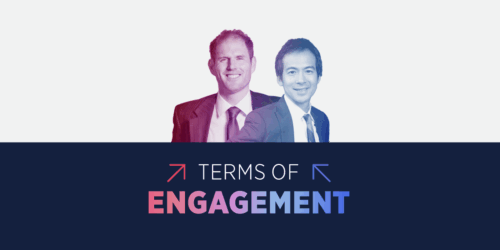
Podcast
Is America Ready to Vote by Phone?
Archon Fung and Stephen Richer are joined by Michelle Feldman, political director at Mobile Voting, a nonprofit, nonpartisan initiative working to make voting easier with expanded access to mobile voting.
Video
The Electoral College is the system by which Americans elect their president every four years. When American voters go to the polls for a presidential election, they are actually voting for a slate of electors who have pledged to support a specific candidate. These electors cast their own votes, and the winner is elected to the presidency. Two hundred years ago, the Framers incorporated the Electoral College into the United States Constitution, and to this day it remains one of the most controversial aspects of that document. But despite numerous attempts to reform or even abolish it, the Electoral College remains the mechanism by which Americans choose their president every four years. So why is it still around? Alex Keyssar, Matthew W. Stirling, Jr. Professor of History and Social Policy at Harvard Kennedy School, explores this subject in his latest book, “Why Do We Still Have The Electoral College?”
The answer is not as straight forward as one might think, and in this video Professor Keyssar discusses the myriad reasons that we still follow with what he calls, “a process that does not conform to democratic principles the nation has publicly championed.”
Behind the Book is a collaboration between the Office of Communications and Public Affairs and Library and Knowledge Services at Harvard Kennedy School.
Podcast
Archon Fung and Stephen Richer are joined by Michelle Feldman, political director at Mobile Voting, a nonprofit, nonpartisan initiative working to make voting easier with expanded access to mobile voting.
Podcast
Archon Fung and Stephen Richer discuss whether fusion voting expands representation and strengthens smaller parties—or whether it muddies party lines and confuses voters.
Podcast
Archon Fung and Stephen Richer are joined by Jennifer Lemmerman, Chief Policy Officer at Project Bread, to discuss the impact the lapse in SNAP funding is having on individuals and families.
Podcast
Archon Fung and Stephen Richer are joined by Michelle Feldman, political director at Mobile Voting, a nonprofit, nonpartisan initiative working to make voting easier with expanded access to mobile voting.
Podcast
This week, Danielle Allen joins Archon Fung and Stephen Richer on Terms of Engagement.
Commentary
Last week’s leak of the U.S. Department of Education’s proposed “Compact for Academic Excellence in Higher Education” drew intense reactions across academia. Critics call it government overreach threatening free expression, while supporters see a chance for reform and renewed trust between universities and policymakers. Danielle Allen, James Bryant Conant University Professor at Harvard University, director of the Democratic Knowledge Project and the Allen Lab for Democracy Renovation, weighs in.
